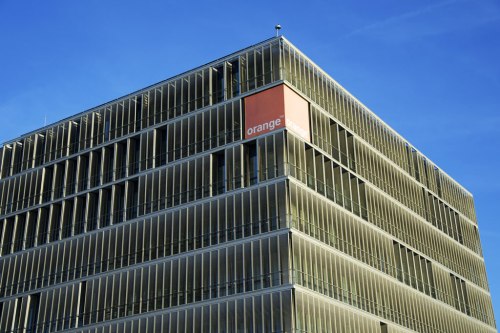Agile at Orange France
 Koen Vermeulen is CIO at Orange France, and awarded CIO of the year in 2015. He kindly accepted to answer a few questions related to the implementation of Agile methodology, and how it brings a brand new spirit for innovation projects.
Koen Vermeulen is CIO at Orange France, and awarded CIO of the year in 2015. He kindly accepted to answer a few questions related to the implementation of Agile methodology, and how it brings a brand new spirit for innovation projects.
Hi Koen, tell us about yourself, what is your experience, when and how did you join Orange ?
KV: I have a commercial engineering degree in computer sciences from the university of Leuven in Belgium. I worked several years for Computer Sciences Corporation (a system integrator) for different clients. In 1998 I joined Belgacom (now Proximus) as IT director and left them in April 2012 to join Orange. As of nearly 2 years now I am in charge of the IT department for Orange France.
How would you describe the Agile approach that you’ve implemented at Orange France (for example: project breakdown in short sprints, test & learn, constant focus in the relevant direction for the customer, multidisciplinary team)?
KV: We want to apply the Agile approach while respecting strictly its principles to avoid dilution of the advantages. Agility is about having a vision and a strategy but with the flexibility to adapt it, based on user feedback and the reality of the market. The teams have a high degree of autonomy and are composed in a multidisciplinary way.
At application level we had already quite some agile experience, but now we want to apply this on projects E2E, to accelerate our “first time to user†with a factor 5 to 6.

What is the Orange Digital Lab?
KV: In order to assure we’re applying the way of working as it should and to accompany the teams working in an agile project, we’ve created an environment in which we create all the conditions with experienced staff to realize these projects. The purpose is that people participating in these real operational projects, get familiar with the way of working through real-life projects. We’ve implemented several projets already in 2015 and in 2016 we will increase the use of these approaches.
Orange Digital Lab is a framework to incubate around 7 projects involving employees from different departments, thus achieving tremendous short lead time for project delivery.

Next to the digital lab we also have an Agile starter offer (focus on project start) and agile in self service mode.
What other agile methodologies do you practice?
The agile methodology helps us in having projects E2E, quicker and more adapted to the most urgent needs in production by ensuring basically a closer collaboration, more autonomy, focus on what is essential and feedback. But also the way we “produce an IT system†evolves by making development and operations team work more closely together, working in shorter feedback cycles and automating repetitive tasks as much as possible, also often referred to as DEVOPS. Although not applicable and needed for all systems, we want to evolve towards a situation where we can technically deploy new features on a continuous basis.

The other point that makes projects, with an important IT impact, expensive and long is the complexity of integration between systems. Therefore we develop new interfaces as self-service APIs, as if they were functionally exposed on the web. This requires simplicity and ease to understand what the API is about, security should be embedded and operational robustness to avoid issues causing chain reactions on the rest of the application landscape.

When moving towards this new way of working, which resistance or hurdles are to be anticipated?
As with every change, people are initially concerned and afraid of the unknown. We’ve noticed so far that nearly all people who have experienced this way of collaborating are all very satisfied (satisfaction levels of around 90%) and don’t want to go back to the former way of doing projects. The change management approach also looks at the environment around the key actors (management, governance, support functions etc.) and not only to the direct project members. We have a specific work stream looking at rewarding project work the same way as “more classically structured†operational organizations.
Author’s note: agile and cross-functional teams lead to unified decision across departments, autonomy, common culture and team spirit: ‘the team leads the team’ and activates collective intelligence.
Editor’s note: ISPIM recently announced Orange as the 2016 Grand Prize winner for Excellence in Innovation Management for Imagine with Orange.
image credits: enregistrer
Wait! Before you go…
Choose how you want the latest innovation content delivered to you:
- Daily — RSS Feed — Email — Twitter — Facebook — Linkedin Today
- Weekly — Email Newsletter —
 Nicolas Bry is a senior VP at Orange Innovation Group. Serial innovator, he set-up creative BU with an international challenge, and a focus on new TV experiences. Forward thinker, he completed a thesis on “Rapid Innovationâ€, implemented successfully at Orange, further developed in his writings. He tweets @nicobry
Nicolas Bry is a senior VP at Orange Innovation Group. Serial innovator, he set-up creative BU with an international challenge, and a focus on new TV experiences. Forward thinker, he completed a thesis on “Rapid Innovationâ€, implemented successfully at Orange, further developed in his writings. He tweets @nicobry
NEVER MISS ANOTHER NEWSLETTER!
LATEST BLOGS
Four ways you can ensure employees take accountability for their work
One of the most important driving factors for any successful business is a high-performing team. Having people working for you…
Read MoreWhat is digital upskilling and why is it important?
Photo by Annie Spratt on Unsplash In a world of business that never stands…
Read More



